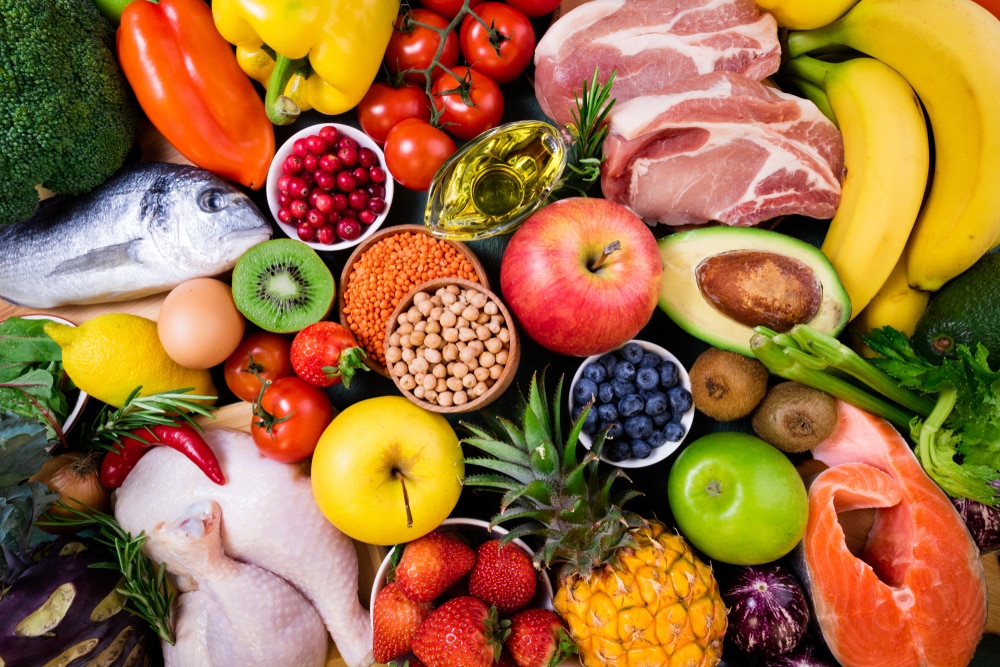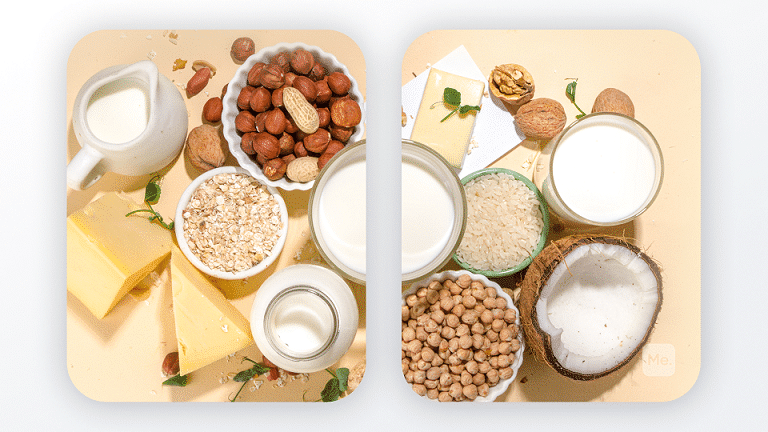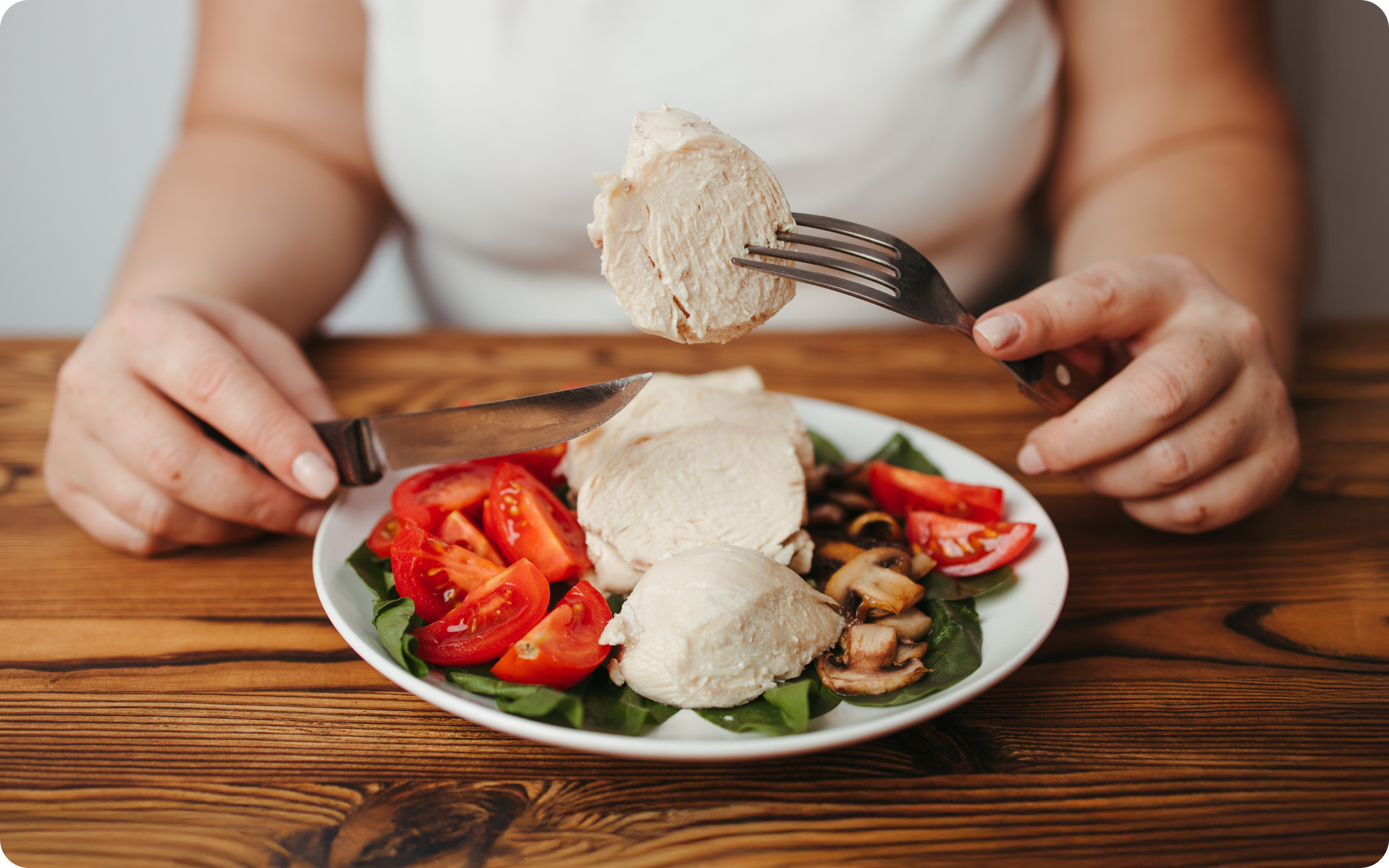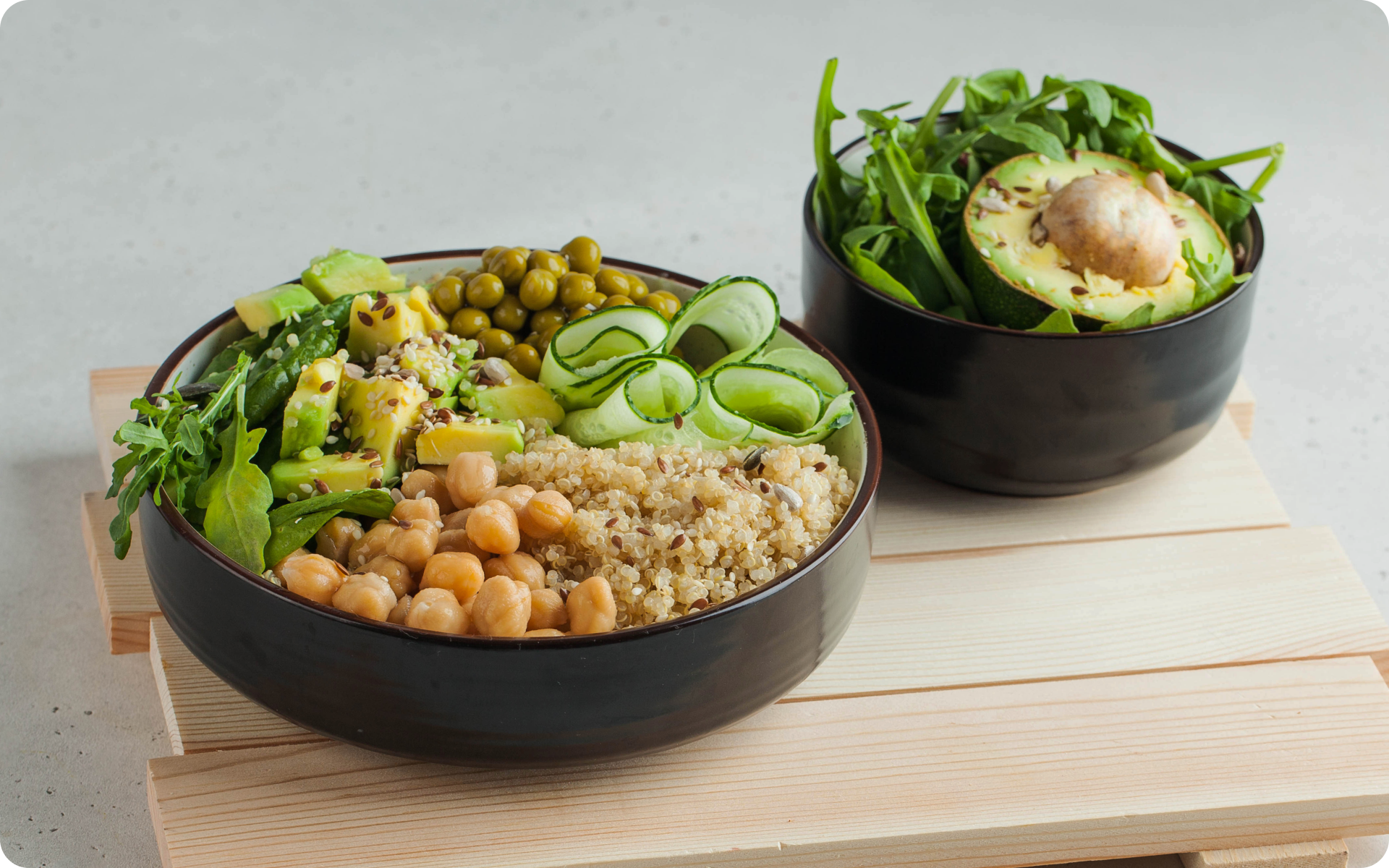Which diet is the most effective in weight loss? This is a popular question among people looking to reduce some weight. Different types of diets have gained popularity over the years for their visible impacts, other benefits and from the beliefs that their proponents spread via word of mouth, media, and other channels. Despite the popularity, some information may be misleading. To help you parse between the factual and fantasy, here are the details of these common weight loss diets to direct you to make the right decision.
You must have heard that a particular diet is more beneficial than the other or guarantees quick weight loss within a shorter period. This may be true, but what are the other pros and cons involved? It is important to understand that ‘one man’s meat may be another man’s poison’; with this in mind, know that there are different types of diets for different body types.
Different Types Of Diets To Lose Weight
Diets can be defined as fixed or outlined eating and drinking plans for a specific purpose such as weight loss or weight gain. Particularly for weight loss, some meal plans are healthy and sustainable in the long run, while others, though effective in the short run, are very restrictive and may harm your body. While some diets restrict carbohydrates, calories, or unhealthy fats, others concentrate on reducing your appetite. So, what are the different types of diets? Here is a detailed breakdown of the most common diets that you may have heard of or will come across.
1. The Mediterranean Diet
Borrowing heavily from the nutritional habits of the people of Southern Europe, i.e., Greece, Crete, Southern Italy, Spain, Southern France, and Portugal, this is a vegetable-rich diet that restricts most of the possible meat intake. Plant foods, whole grains, beans, olive oil, seeds, and nuts are preferred, and the main dairy foods are cheese and yogurt (20). Some poultry, wine, and moderate amounts of fish are allowed. Vegetables are taken in every meal, and fish is preferred to chicken. Instead of butter, marinades, or salad dressings, oil (particularly olive) is recommended. Also, large quantities of whole grains, nuts, and herbs are consumed.
Benefits
- It helps with depression. According to a study published on HHS Public Access, this eating plan may protect against developing depressive symptoms in older age (11).
- It controls blood sugar levels.
- It is a healthy, sustainable weight loss diet.
- Extensive research confirms that it enhances the quality of life and lowers the risk of diseases such as dementia and heart conditions (20).
2. Vegetarian Diet
Vegetarians do not consume animal products for either ethical, health, or environmental reasons. In addition, they prohibit animal exploitation and cruelty.
Different Types Of Vegetarian Diets
What are the different types of vegetarian diets? Types of vegetarians include fruitician vegetarians, lacto-ovo vegetarian, ovo-vegetarian, semi-vegetarian, pesco-vegetarian, and living food diet vegetarian, leading to some variations in their eating plans (18). For instance, lacto-ovos do not eat animal-based foods apart from dairy, honey, and eggs. Here are some common vegetarian diets.
-
Veganism-Vegan Diet
Veganism is the strictest type of vegetarianism because on top of meat, it does not allow the consumption of eggs, dairy, or animal-derived products like honey, gelatin, whey, albumin, casein, or some types of vitamin d-3. Other than ethical, health, and environmental reasons, they avoid animal products for compassionate purposes. Here are the different types of vegan diets.
- 22 days vegan: Eat fresh, non-processed plant days for 22 days
- Fruitician: take plenty of raw fruits, about 75% of your meal
- Daniel fast: 21- days of mainly plant diet accompanied by prayer
- Rainbow diet: Consume veggies and fruits from 8 different colors every day
- 7 day color: Take only one color of fruit and vegetables daily, each day a different color
- Raw food: consume whole, unprocessed fruits and vegetables, 75% uncooked
- Other vegan diets include Tom Brady diet plan, Engine 2 diet, Nutritarian
Benefits
- It is low-fat and high protein; therefore, it contributes to weight loss by making one feel fuller for longer.
- It is a plant-based diet; thus, it may reduce the risk of type 2 diabetes, heart diseases, and premature death.
- Because processed meat is restricted, the risk of Alzheimer’s, cancer, or heart diseases is minimized.
- It minimizes the risk of coronary heart diseases, high blood pressure, and obesity.
Disadvantages
- It may be low on several nutrients such as vitamin D, B12, iron, iodine, calcium, omega-3 fatty acids, and zinc because it prohibits animal foods intake.
Read More: The Basics of a Vegetarian Diet: How Safe Is It?
3. Blood Type Diet
Some different types of diets for different body types are customized for specific blood types whereby the eating plan is matched to standard dietary requirements of the specific blood type (15). For instance,
- Type A blood group members (agrarians) should avoid red meat and choose more tofu, turkey, and fruit and for weight loss, select mostly seafood, soy, and vegetables.
- The type B (nomads) may eat plants and most sources of meats apart from chicken and pork and avoid corn, wheat, tomatoes, and lentils.
- Type AB (enigma) members may consume tofu, seafood, dairy, beans, and grains but should avoid corn, kidney beans, beef, and chicken.
- Type O blood group members are advised to consume high-protein foods, and for weight loss, they should avoid dairy and include red meat, spinach, broccoli, and seafood.
There is also the Body Type diet, whereby meals are customized depending on whether you are ectomorph, mesomorph, or endomorph. Neither the blood type nor body type diet are backed by scientific evidence.
4. The South Beach Diet
Introduced in 2003, this eating plan focuses on changing an individual’s overall eating habits by balancing out their daily diet (14). Healthy fats, good carbohydrates, and lean protein are recommended. Note that some carbohydrates are eliminated so that one can eat only healthy meals daily.
Benefits
- Promotes a healthy lifestyle that leads to better well-being
Disadvantages
- Too much restriction of carbs may lead to ketosis, which may be characterized by headache, nausea, mental fatigue, bad breath, dehydration, and dizziness (14).
5. Raw Food Diet
As the name suggests, this diet encourages you to eat uncooked and unprocessed foods (at least three-quarters of food consumed should be raw food). Foods produced or pasteurized with any additives or synthetics are prohibited; therefore, one eats completely organic and plant-based foods. The focus is to create energy surge, decrease inflammation, and minimize the amount of dietary carcinogens. Raw foodists are categorized as raw vegetarians, raw vegans, raw carnivores, and raw omnivores.
6. Low-Carb Diets
These involve restricting the daily carbohydrate intake so that your body is forced to utilize more fats for fuel in place of carbohydrates as the main energy source. This diet is rich in proteins and fats.
Benefits
- Useful in weight loss. More weight may be lost than in low-fat, calorie-restricted diets because one can reach ketosis. Also, they can reduce appetite.
- It may reduce dangerous belly fat logged around organs.
- Minimizes risk factors such as insulin levels, blood sugar levels, cholesterol levels, blood triglycerides, and blood pressure.
Disadvantages
- May result in an increase in bad LDL cholesterol (9).
- In extremely rare cases, very low-carb diets may result in nondiabetic ketoacidosis, especially in lactating mothers, which may be fatal if not treated (2).
Whether you’re looking to simply pep up your fitness routine, jazz up your diet with mouth-watering low-calorie recipes or want to get your act together and significantly drop that number on your scale – BetterMe app has got you covered! Improve your body and revamp your life with us!
Different Types Of Low-Carb Diets
They include:
This eating plan encourages you to eat the same foods as the hunter-gatherer ancestors may have consumed before the development of agriculture, which resulted in the western diet characterized by dairy, grains, and processed foodstuffs (16). Foods consumed are lean proteins, grass-fed meat, whole foods, fruits, eggs, fowl, vegetables, nuts, and seeds. Being a restrictive low-carb natural way of eating, only sugars from fruits are allowed, and it prohibits the intake of dairy, grain-fed meat, and processed foodstuffs. Some flexible Paleo diet versions allow dairy such as butter and cheese and tubers like sweet potatoes.
Benefits
- Since carbohydrates are limited, the amount of glucose in your body is decreased, triggering the use of fat as the fuel source. This may result in significant weight.
Disadvantages
- It eliminates nutritious and healthy foodstuffs such as legumes, whole grains, and dairy.
- Although it is claimed to minimize the risk of heart diseases by reducing risk factors such as blood pressure, blood sugar, cholesterol, and blood triglycerides, some research shows that it may be bad for your heart health (13).
-
The Atkins Diet
It is a famous, fast, low-carb weight loss diet whose proponents believe that can shed a considerable amount of pounds from consuming protein and fats in any amounts but no carbohydrates. This low-carb diet concentrates on controlling insulin levels in the body, with the reasoning that large amounts of refined carbs result in a rapid rise and fall of insulin levels. When insulin levels go up, they trigger the body to conserve energy from food eaten; therefore, the chances that the body will utilize stored fats as a source of energy are less.
Divided into 4 phases, the first one being the induction phase whereby you eat below 20grams of carbohydrates in a day for two weeks. You then begin to slowly reintroduce healthy carbs into the diet as you approach your desired weight.
-
The Dukan Diet
This is a high-protein, low-carb diet for weight loss. It is split into 4 phases- 2 weight loss phases and 2 maintenance phases, each with a particular dietary plan and varying time-frames depending on the number of pounds you want to shed. The 2 weight loss phases involve the consumption of high-protein meals, and you must have oat bran. The other 2 maintenance phases involve consuming non-starchy veggies and some fats and carbohydrates, and as time goes by, you consume fewer pure proteins to maintain your ideal weight.
Benefits
- Weight loss is achieved through an increase in some fullness hormones, a higher metabolic rate, and a reduction in the hunger hormone ghrelin.
Disadvantages
- It has no other proven benefits other than weight loss.
- Quick weight loss achieved through extreme calorie restriction causes significant loss of muscles, and the body may end up conserving energy; therefore, it will be easier to regain lost weight.
- There is very little research on this meal plan. In addition, it restricts both fat and carb intake, a strategy that is not science-based. Instead, research has proven that eating healthy fats as part of a high- protein diet may increase metabolic rate in comparison to low-carb or low-fat diets.
This is another meal plan where carb intake is reduced, and unlike the others, consumption of healthy fats (nuts, avocados, seeds, coconuts, oily fish, and olive oil) is increased to permit the body to burn fat as fuel instead of carbohydrates (glucose). It is the most popular diet in the US (). By following this eating plan, fat deposits are broken down for fuel to create ketones through the ketosis process.
Benefits
- It is used to treat drug-resistant epilepsy, manage diabetes, lower cholesterol and triglycerides, and improve blood pressure (21).
- Weight loss through the elimination of empty-calorie staples such as white rice, white bread, and sugary beverages, reducing appetite and burning more calories.
Disadvantages
- It prohibits the intake of nutritious fruits and veggies that are high in carbohydrates
- Too much protein intake may be harmful to your health
- May result in fatigue due to lack of carbs
- May result in ketoacidosis in people with Type 1 diabetes that can lead to diabetic coma or death.
What Are The Different Types Of Keto Diets?
There are various high-fats, moderate protein, and very low-carb keto diets. These include:
-
Lazy Keto
Focus is only on keeping the carbohydrate intake very low, but may not lead to ketosis.
-
Keto 20
It is a variation of the keto diet whereby more carbs than usual are consumed. While traditional ketogenic diet recommends 70-75% fat, 10% protein, and 5% carbs, here fats are 50%, protein 30%, and carbs 20% (21).
Read More: Vegetarian vs. Keto Diet: Which Diet Method Helps Better In Losing Weight?
7. Ultra-Low-Fat Diet
The usual low-fat diet provides about 30% of daily calories as fat, but an ultra-low-fat eating plan restricts fat consumption to below 10% of the daily calories. This is because the proponents believe that 30% is not low enough, therefore, more fat should be restricted for weight loss and other health benefits. It is a high-carb diet and low in proteins because mostly one consumes mostly plant-based foodstuffs and controlled amounts of animal products (10).
Benefits
- Great weight loss outcomes among the obese.
- May result in significant improvements in Type 2 diabetes and slow multiple sclerosis progression.
- Can enhance risk factors for heart conditions such as high cholesterol, high blood pressure, and markers for inflammation.
Disadvantages
- Many of its health benefits may be due to weight loss, which can be achieved with other diets as well.
- With regards to weight loss, this eating plan may be ineffective in the long run because it is very restrictive and hard to stick to.
- Fat is essential in the body; therefore, restricting too much of it may cause problems in the long run.
- Other healthy foodstuffs are limited, which may affect the functioning of the body.
8. The Zone Diet
It is a low-glycemic load meal plan whereby carbohydrates, proteins, and fats (monounsaturated oils like almonds, avocados, and olive oil) are limited to 35-45%, 30% ( ⅓), and 30% ( ⅓), respectively, of the daily calorie intake (17). ⅔ of the meal is colorful vegetables and fruits. Carbs with a low glycemic index, i.e., an estimate of how much it increases the blood glucose levels, are consumed (bananas, potatoes, and rice are high-GIs, therefore prohibited). There are inconsistent outcomes from studies on this diet, concluding that it reduces appetite and promotes weight loss. In contrast, others argue that weight loss realized by following a low-glycemic diet is minimal compared to that of other meal plans.
Benefits
Initially, this meal plan was meant to (17)
- Help lose weight
- Reduce the risk of chronic illnesses
- Minimize diet-induced inflammation
Disadvantages
It restricts the intake of certain healthy carbohydrates, for instance, potatoes and bananas.
9. Intermittent Fasting (IF)
This is an eating pattern that is split into periods of eating and fasting (23). You do not limit what you consume but control when you eat different foods. It can be effective if followed appropriately. Do not overcompensate by consuming excess calories when not fasting.
Different Types Of Fasting Diets- IF Methods And Diets
- 16/8 method: Skip breakfast-the daily eating period should be 8 hours apart, and then you fast for the remaining 16 hours of the day.
- Eat-stop-eat method: You fast for 24 hours once or twice a week on non-consecutive days
- 5:2 diet: For 5 days, take the usual daily calories, and then limit calorie intake to between 500-600 on 2 non-consecutive days of the week.
- Warrior diet: Take one huge meal at night and small amounts of vegetables and raw fruits during the day.
Other fasting diets include the Military diet, Master Cleanse diet, and Juice cleanse.
Benefits
- IF is a popular and successful weight loss diet because its calorie restriction is relatively easy. It causes less muscle loss than other calorie-restrictive diets and may boost the metabolic rate in the short-run.
- Is believed to improve cellular repair, increase the levels of Human Growth Hormone (HCG), enhance insulin sensitivity, and alter gene expressions (8).
- May reduce inflammation markers, blood sugar levels, cholesterol level, and blood triglycerides.
- Some animal studies suggest that IF may help grow new brain cells, protect against Alzheimer’s and cancer, and increase life span (7).
Disadvantages
- Not suitable for everyone, with studies showing that it is more beneficial to men.
- Pregnant and breastfeeding women, children, teens, people with diabetes, those sensitive to blood sugar level drops, and the nutrient-deficient, malnourished, and underweight individuals should not fast.
If you struggle to even flirt with the idea of giving up your favorite foods or working out till your legs give way – BetterMe app is here to breathe a fresh perspective into the way you view the weight loss process! Check out the app and experience the fun side of fitness and dieting with BetterMe!
10. The HCG Diet
Human Chorionic Gonadotropin (HCG) is a very extreme meal plan that makes one lose weight very fast, up to 1-2 pounds daily. During early pregnancy, the hormone HCG is very high, and the body will maintain the production of hormones that are essential for the fetus’s development. The same hormone is used to treat infertility.
According to the proponents, HCG boosts metabolism and loss of fat without inducing hunger.
This meal plan is split into 3 phases, with the first phase involving the intake of HCG supplements. In the second phase, which is about 3-6 weeks, you will receive HCG supplement injections, drops, pellets, or sprays, as you embrace an ultra-low-calorie eating plan of 500 calories a day. Lastly, you cease HCG intake and begin to increase your food intake, slowly.
Criticism
- According to research, weight loss has nothing to do with the HCG hormone. Instead, it is as a result of the ultra-low-calorie diet.
Disadvantages
- It is an ultra-low calorie diet, therefore it may cause muscle loss that leads to reduced ability to burn calories because the body thinks you are starving and tries to conserve energy.
- Many side effects, for example, fatigue, headaches, and depression. In one study, a woman under this diet developed blood clots.
FDA disapproves of it because it is dangerous, illegal, and fraudulent (3).
11. Mayo Clinic Diet
It encourages the consumption of nutrient-dense foods and minimal intake of sugar. It is effective for weight loss, and there is no calorie counting.
12. Fad Diets
These are temporary weight loss plans that promise quick weight loss. They include:
- Cabbage Soup diet: Taking plenty of cabbage soup for a week
- Five Bite diet: Skip breakfast, eat five bites of anything you wish for lunch and dinner.
- Soup diet: Take soup for one meal every day for the given period
- Apple Cider Vinegar diet: You sip a few spoons of apple cider vinegar before every meal or add some drops of vinegar to a healthy meal.
Note: They are not recommended.
Final Thought
How many different types of diets are there? There are in fact uncountable thousands of diets for different purposes such as weight loss, weight gain, lowering cholesterol e.t.c. The bottom line is to understand your body type and select a healthy weight loss plan that is sustainable, bearing in mind that different diets work for different people. With this knowledge of different types of diets, you are now well-equipped to select the one that will help you attain your weight loss goals. Remember to get approval from your doctor and a dietician before trying any meal plan.
DISCLAIMER:
This article is intended for general informational purposes only and does not address individual circumstances. It is not a substitute for professional advice or help and should not be relied on to make decisions of any kind. Any action you take upon the information presented in this article is strictly at your own risk and responsibility!
SOURCES:
- 9 Popular Weight Loss Diets Reviewed (2019, healthline.com)
- Acute intractable vomiting and severe ketoacidosis secondary to the Dukan Diet© (2014,pubmed.ncbi.nlm.nih.gov)
- Avoid Dangerous HCG Diet Products (n.d, fda.gov)
- By the way, doctor: What do you know about the HCG diet?
- Comparison of energy-restricted very low-carbohydrate and low-fat diets on weight loss and body composition in overweight men and women (2004, pubmed.ncbi.nlm.nih.gov)
- Diet and body mass index in 38000 EPIC-Oxford meat-eaters, fish-eaters, vegetarians and vegans (2003, pubmed.ncbi.nlm.nih.gov)
- Fasting cycles retard growth of tumors and sensitize a range of cancer cell types to chemotherapy (2012, pubmed.ncbi.nlm.nih.gov)
- Fasting enhances growth hormone secretion and amplifies the complex rhythms of growth hormone secretion in man (1988, pubmed.ncbi.nlm.nih.gov)
- Low-carbohydrate nutrition and metabolism (2007, pubmed.ncbi.nlm.nih.gov)
- Low-fat diets (1998, pubmed.ncbi.nlm.nih.gov)
- Mediterranean Diet and Depressive Symptoms Among Older Adults Over Time (2015, ncbi.nlm.nih.gov)
- Nine most popular diets rated by experts 2017 (2017, medicalnewstoday.com)
- Paleo diet may be bad for heart health (2019, medicalnewstoday.com)
- South Beach Diet (2020,mayoclinic.org)
- The Blood Type Diet: An Evidence-Based Review (2017, healthline.com)
- The Paleo Lifestyle: The Way, Way, Way Back (2014, nytimes.com)
- The zone diet: an anti-inflammatory, low glycemic-load diet (2004, pubmed.ncbi.nlm.nih.gov)
- Vegetarian diet: How to get the best nutrition (2020, mayoclinic.org)
- Vegetarian, vegan diets and multiple health outcomes: A systematic review with meta-analysis of observational studies (2017, pubmed.ncbi.nlm.nih.gov)
- What actually is the Mediterranean diet – and does it work? (2016, theguardian.com)
- What Is the Keto Diet and Does It Work? (2020, nytimes.com)
- Which diet is right for you? (2020, heartfoundation.org.nz)
- What You Need to Know About Intermittent Fasting (2020, betterme.world)
- Which One of These 100 Diets Could Help You Lose Weight? We’ve Got Tons of Info to Help You Decide (2020, parade.com)





















